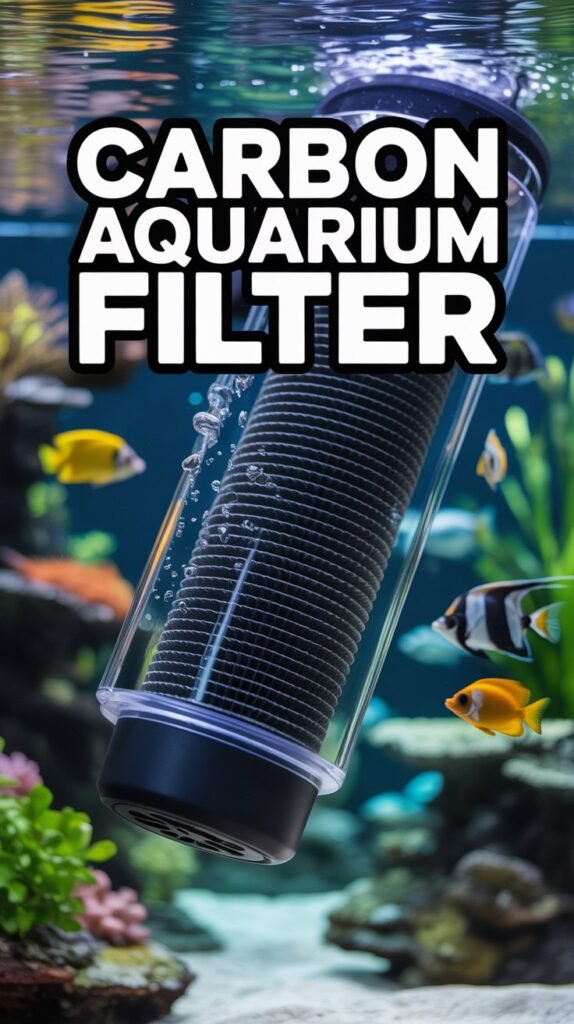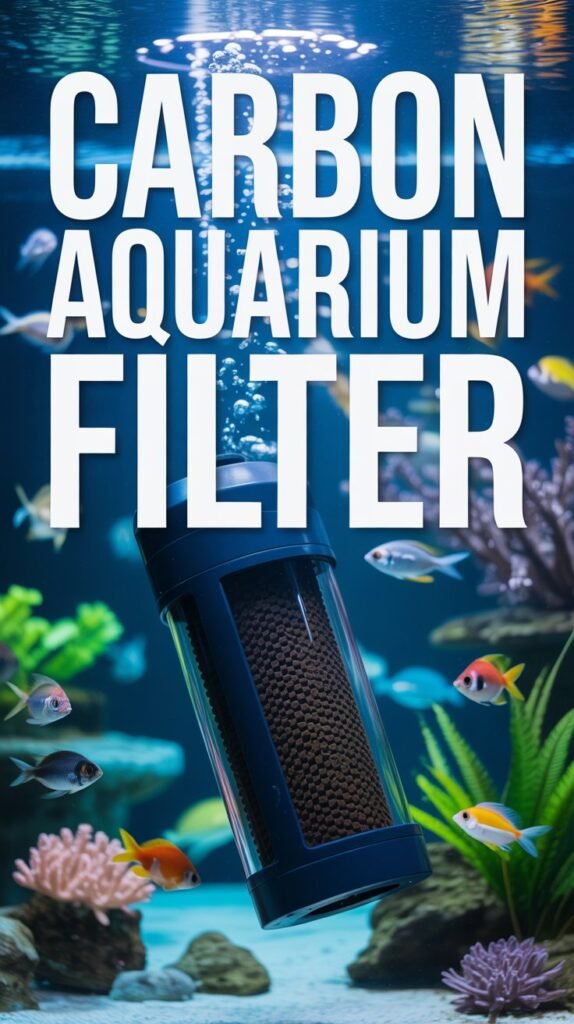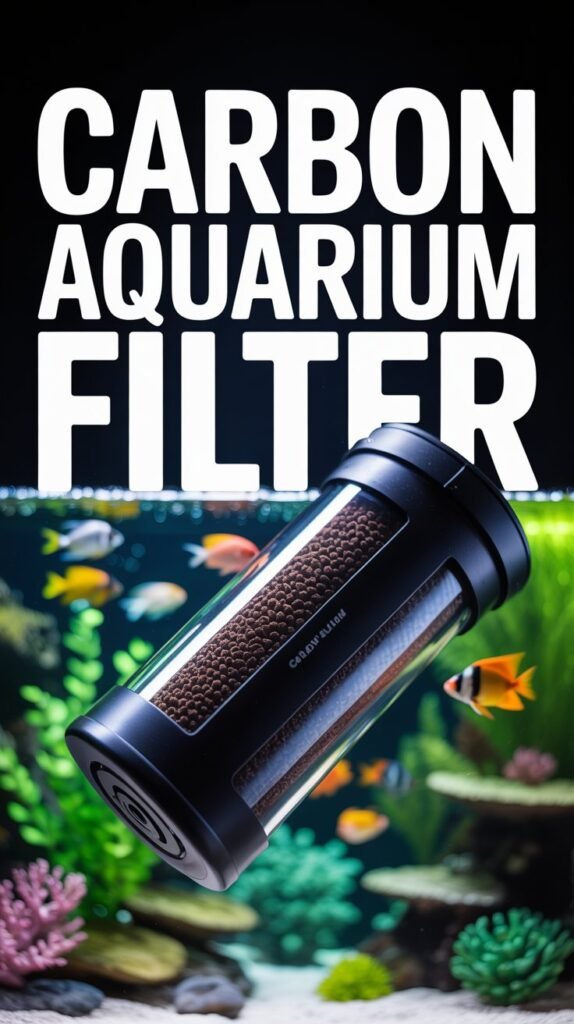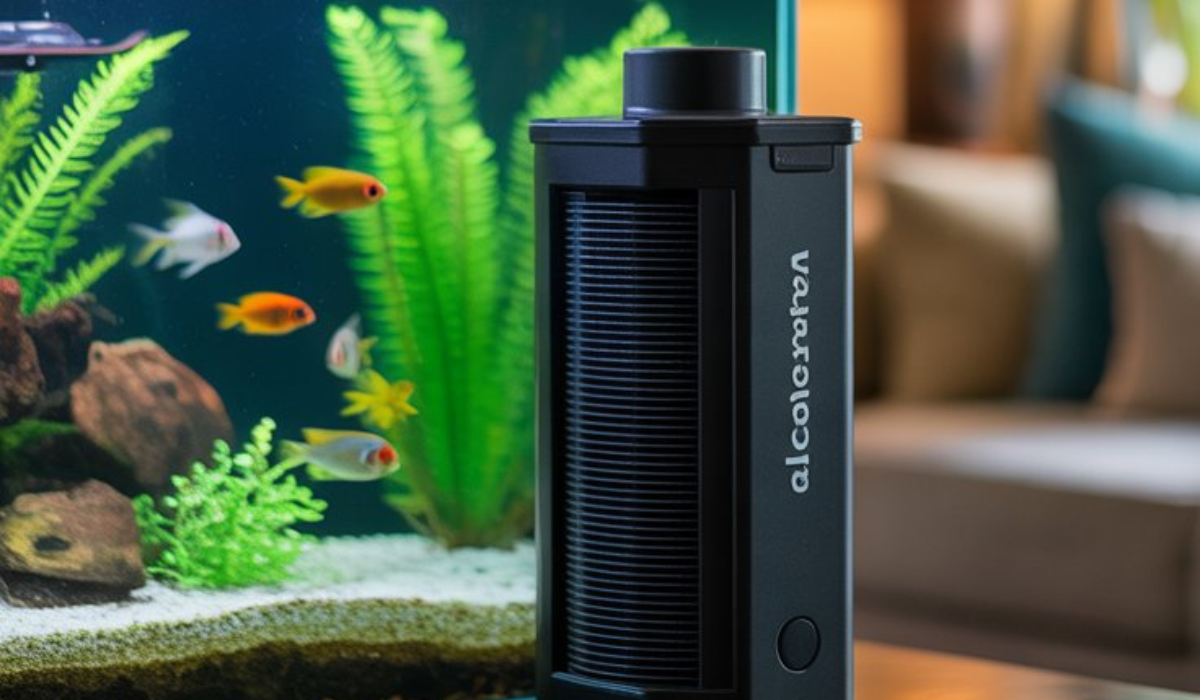Maintaining clean, clear, and toxin-free water is crucial for a thriving aquarium. Fish, plants, and beneficial bacteria depend on a stable, pure environment. One of the most effective tools for achieving this is the carbon aquarium filter. Activated carbon filtration has been a staple in aquarium maintenance for decades, yet many aquarists still wonder how it works, when to use it, and what its limitations are.
This comprehensive guide explains everything you need to know about carbon aquarium filters — how they function, their advantages and disadvantages, proper maintenance, and how to choose the best carbon type for your setup.
What Is a Carbon Aquarium Filter?
A carbon aquarium filter (also known as an activated carbon filter) uses highly porous carbon material to remove impurities, chemicals, and discoloration from aquarium water. It’s commonly used in freshwater, saltwater, and reef aquariums.
The carbon works through adsorption — a process where molecules stick to the surface of the carbon particles rather than being absorbed into them. Because activated carbon has an enormous internal surface area (up to 1,000 m² per gram), it can capture a large volume of impurities.
How Activated Carbon Works in an Aquarium

When water flows through a carbon aquarium filter, organic molecules, toxins, and chemicals attach to the surface of the carbon. Over time, the pores become filled, and the carbon must be replaced.
Here’s what activated carbon removes:
- Chlorine and Chloramine (from tap water)
- Tannins (which cause yellow or brown discoloration)
- Medications and Residues (after fish treatments)
- Odors (caused by decaying organics)
- Dissolved organic compounds (DOCs)
However, it’s important to note that carbon does not remove ammonia, nitrites, nitrates, or heavy metals — that’s the job of biological and mechanical filtration.
Types of Activated Carbon Used in Aquarium Filters
Not all carbon is created equal. Different forms of activated carbon vary in performance, lifespan, and application. The main types include:
1. Granular Activated Carbon (GAC)
The most common type, GAC consists of small, irregular granules. It offers a high surface area and good water flow.
Pros:
- Fast adsorption
- Easy to use and replace
- Works well in most aquarium filters
Cons:
- Can create dust if not rinsed
- Slightly less dense than other forms
Best For:
General freshwater and marine aquariums.
2. Pelletized Activated Carbon (PAC)
PAC comes in cylindrical pellets, providing uniform size and structure. It’s denser and less dusty.
Pros:
- Long-lasting
- Excellent water flow
- Ideal for canister filters
Cons:
- Slightly more expensive
Best For:
Large aquariums and professional setups.
3. Powdered Activated Carbon (POW)
This fine carbon powder is used less commonly due to its tendency to cloud the water. However, it’s extremely effective for quick toxin removal.
Pros:
- Rapid chemical removal
- Great for emergency use (after medication)
Cons:
- Can escape filter media bags
- Messy to handle
Best For:
Temporary use or specialized treatments.
4. Coconut Shell Activated Carbon
Made from natural coconut shells, this carbon type is eco-friendly and features micro-pores that remove smaller organic molecules.
Pros:
- Renewable and sustainable
- Excellent at odor and discoloration removal
Cons:
- Shorter lifespan
Best For:
Eco-friendly aquariums or natural setups.
5. Bituminous and Lignite Carbon
These carbons are derived from coal sources.
- Bituminous carbon has medium pores, suitable for a range of impurities.
- Lignite carbon has larger pores and is great for removing tannins.
Best For:
Heavily stocked aquariums with frequent discoloration issues.
Benefits of Using a Carbon Aquarium Filter

Adding carbon to your filtration system provides several important benefits.
1. Crystal-Clear Water
Activated carbon removes tannins and dissolved organics that cause cloudy or yellow water, resulting in a pristine, transparent tank.
2. Removes Odors
Decaying food and fish waste release unpleasant odors. Carbon effectively neutralizes these smells, leaving your aquarium fresh and odor-free.
3. Eliminates Chemical Residues
After treating fish with medications, carbon helps remove leftover chemicals, preventing harm to plants and invertebrates.
4. Improves Light Penetration
Clear water allows light to pass more efficiently, promoting healthy plant growth and enhancing the colors of fish and corals.
5. Safe for Fish and Plants
Activated carbon doesn’t release harmful substances, making it safe for all aquarium inhabitants when used correctly.
6. Enhances Overall Filtration
When combined with mechanical and biological filtration, carbon provides a complete, three-stage filtration system that keeps the ecosystem balanced.
Drawbacks of Carbon Filtration
Despite its many benefits, carbon filters have a few limitations to consider.
1. Limited Lifespan
Once the carbon’s pores are filled with impurities, it becomes ineffective and may start releasing trapped materials back into the water. Carbon typically lasts 2–4 weeks, depending on tank load.
2. Removes Some Trace Elements
In planted or reef tanks, carbon can strip trace nutrients and minerals that plants or corals need, so moderation is key.
3. Requires Regular Replacement
You can’t “clean” or regenerate aquarium carbon effectively; it must be replaced periodically to maintain performance.
4. Doesn’t Remove Nitrogen Compounds
Carbon filtration alone cannot handle biological waste like ammonia, nitrite, or nitrate. A balanced filtration system is still required.
When to Use a Carbon Aquarium Filter
Not every aquarium needs constant carbon use. Here are the best times to use it:
- After Medicating Fish – Removes leftover treatment chemicals.
- When Water Appears Yellow or Cloudy – Clears tannins and discoloration.
- During Odor Problems – Eliminates smells from decaying waste.
- After Major Maintenance – Helps restore chemical balance.
- In High-Bio-Load Tanks – Supports water clarity between changes.
Some aquarists prefer to use carbon intermittently rather than continuously, depending on their tank’s needs.
How to Add Carbon to Your Aquarium Filter
Adding carbon is simple and compatible with most filter systems.
1. In Canister Filters
Place the carbon media in a mesh filter bag or cartridge and insert it between the mechanical (sponge) and biological stages. This ensures water flows evenly through the carbon.
2. In Hang-On-Back (HOB) Filters
Many HOB filters come with disposable carbon cartridges. Replace them every 3–4 weeks to maintain efficiency.
3. In Internal or Sponge Filters
You can insert small mesh bags of carbon behind the sponge layers for extra polishing.
4. In Sumps or Media Reactors
In larger setups, carbon can be housed in a reactor, ensuring controlled water flow for maximum adsorption efficiency.
5. Rinsing Carbon Before Use
Always rinse activated carbon under running water until the water runs clear. This removes dust that can cloud the aquarium.
How Long Does Carbon Last in an Aquarium?

Activated carbon typically remains effective for 3 to 4 weeks. The exact duration depends on:
- Tank size
- Fish population
- Feeding frequency
- Organic load
If water becomes discolored or odors return, it’s time to replace the carbon.
How to Tell If Your Carbon Filter Is Spent
Signs that it’s time for replacement:
- Yellow or brown water returns
- Foul or earthy smell
- Medications linger longer than usual
- No improvement in clarity
Regular replacement ensures continuous performance.
How Much Carbon Do You Need?
A general rule is 1 cup (about 100 grams) of carbon per 50 gallons of water. Always refer to the manufacturer’s instructions, as carbon density and effectiveness vary.
Carbon Aquarium Filter Maintenance
To get the most from your carbon filter:
- Replace every 3–4 weeks.
- Rinse before adding to filter.
- Avoid reusing old carbon.
- Don’t overfill your filter with carbon — too much can restrict flow.
- Pair with mechanical filtration to trap debris before water reaches the carbon.
Carbon Aquarium Filters and Planted Tanks
In planted aquariums, carbon can be both beneficial and problematic.
Pros:
- Keeps water crystal clear for better lighting.
- Removes decaying organic compounds.
Cons:
- Can remove trace fertilizers and nutrients.
Recommendation:
Use carbon only after treatments or water discoloration, not continuously in heavily planted tanks.
Carbon Aquarium Filters in Reef Tanks
In reef aquariums, carbon helps maintain clarity and removes organic pollutants that can irritate corals. However, use caution:
- Use high-quality, phosphate-free carbon.
- Replace regularly to avoid nutrient depletion.
- Avoid sudden carbon removal — it can cause light shock to corals.
Alternatives to Carbon Filtration
If you prefer not to use carbon continuously, several alternatives exist:
| Alternative | Function |
|---|---|
| Purigen | Synthetic resin that removes organics and polishes water |
| PolyFilter Pads | Removes toxins, heavy metals, and ammonia |
| Zeolite | Absorbs ammonia in freshwater tanks |
| Bio-media | Provides long-term biological filtration |
These can complement or replace carbon depending on your aquarium’s needs.
Best Practices for Using Carbon Aquarium Filters
- Always rinse before use.
- Avoid mixing carbon with fine filter media that restrict flow.
- Monitor water clarity weekly.
- Store unused carbon in airtight containers to prevent moisture absorption.
- Use phosphate-free carbon to avoid unwanted algae growth.
Top Carbon Aquarium Filter Brands (2025)
| Brand | Notable Product | Features |
|---|---|---|
| Seachem MatrixCarbon | Pelletized carbon | High surface area, phosphate-free |
| Fluval Carbon | Granular carbon | Long-lasting and low-dust |
| Aquarium Pharmaceuticals (API) | Activated Carbon | Affordable and effective |
| Marineland Black Diamond | Bituminous carbon | Premium purity, great adsorption |
| Eheim Substrat Carbon | Pellet form | Ideal for canisters and sumps |
Frequently Asked Questions (FAQs) About Carbon Aquarium Filters
1. Is activated carbon necessary in every aquarium?
Not always. It’s helpful for odor removal, water clarity, and chemical filtration but not essential for healthy biological filtration.
2. How often should I replace carbon in my filter?
Every 3 to 4 weeks or sooner if you notice water discoloration or odors.
3. Can I clean and reuse activated carbon?
No. Once the carbon’s pores are filled, it cannot be reactivated without industrial equipment.
4. Does activated carbon remove ammonia or nitrates?
No. Carbon targets organic compounds and chemicals, not nitrogen waste.
5. Can carbon harm plants or corals?
In excess, it may remove trace nutrients. Use it moderately or only when necessary.
6. Should I use carbon after medicating fish?
Yes, carbon efficiently removes residual medication from the water column after treatment.
7. Does carbon affect pH?
High-quality activated carbon has minimal impact on pH. Cheaper carbons might slightly lower it.
8. Can I use carbon with other filter media?
Absolutely. Combine it with mechanical sponges and biological media for optimal filtration.
9. Is carbon filtration safe for shrimp and invertebrates?
Yes, as long as the carbon is phosphate-free and properly rinsed.
10. How do I dispose of used carbon?
Simply discard it in household waste — it’s non-toxic once saturated.
Conclusion
A carbon aquarium filter is one of the most effective and affordable tools for maintaining clean, clear, and odor-free water. Whether you run a small freshwater community tank or a complex reef system, activated carbon helps polish the water and remove unwanted impurities.
However, remember that carbon is just one part of a complete filtration system. Combine it with mechanical and biological filtration, and replace it regularly to ensure your aquarium remains a healthy, balanced, and beautiful environment for your aquatic life.

